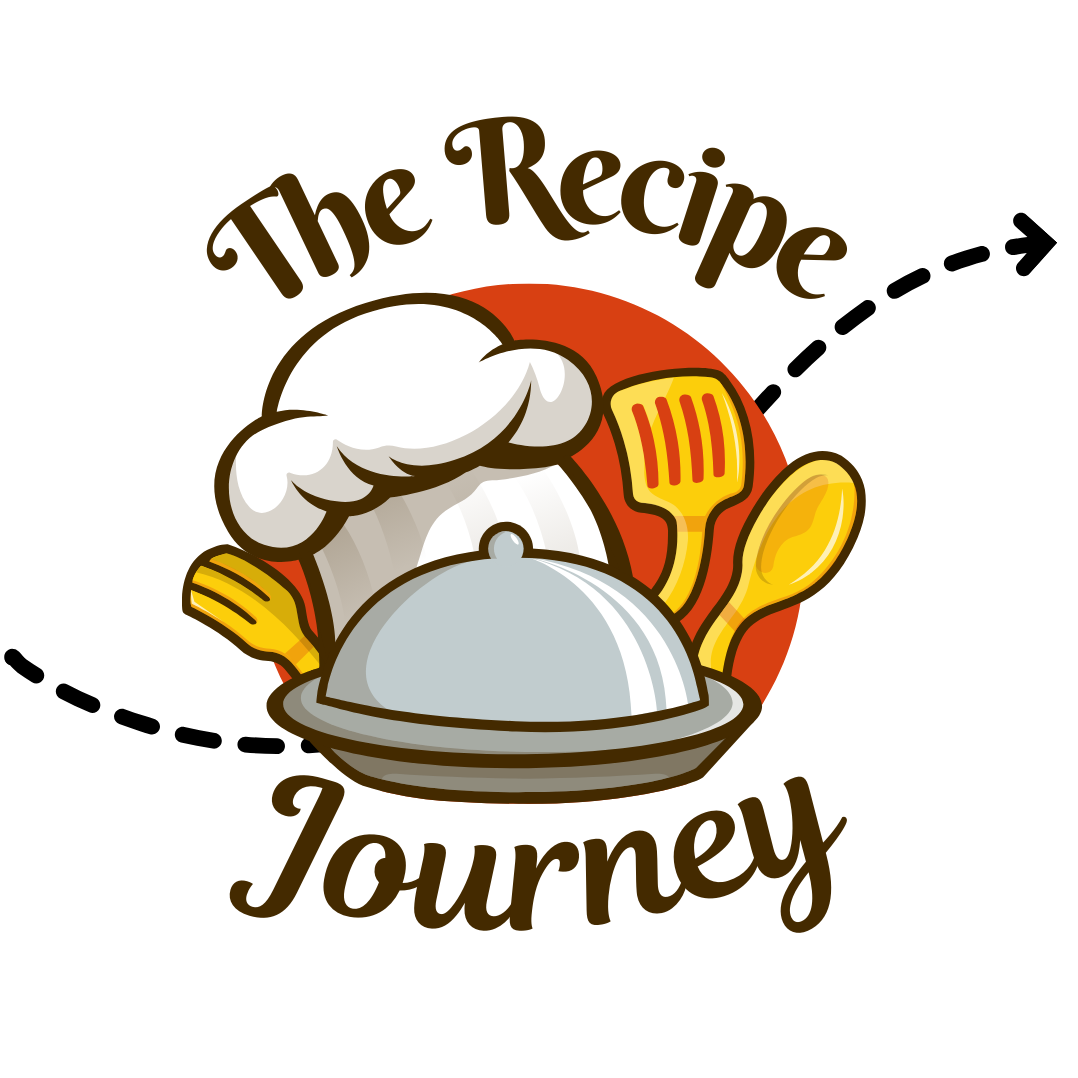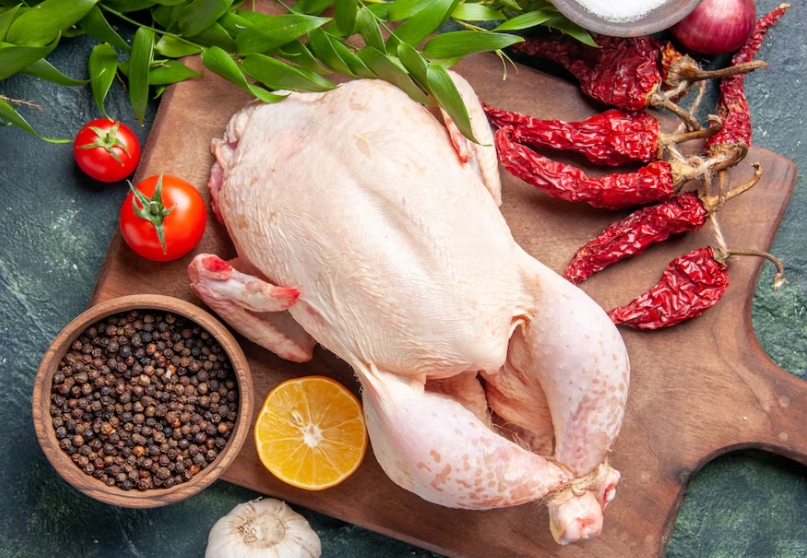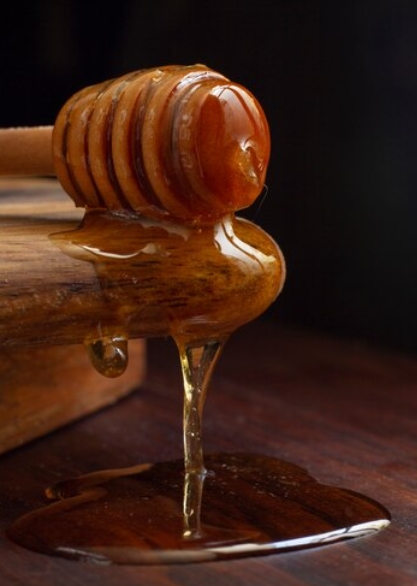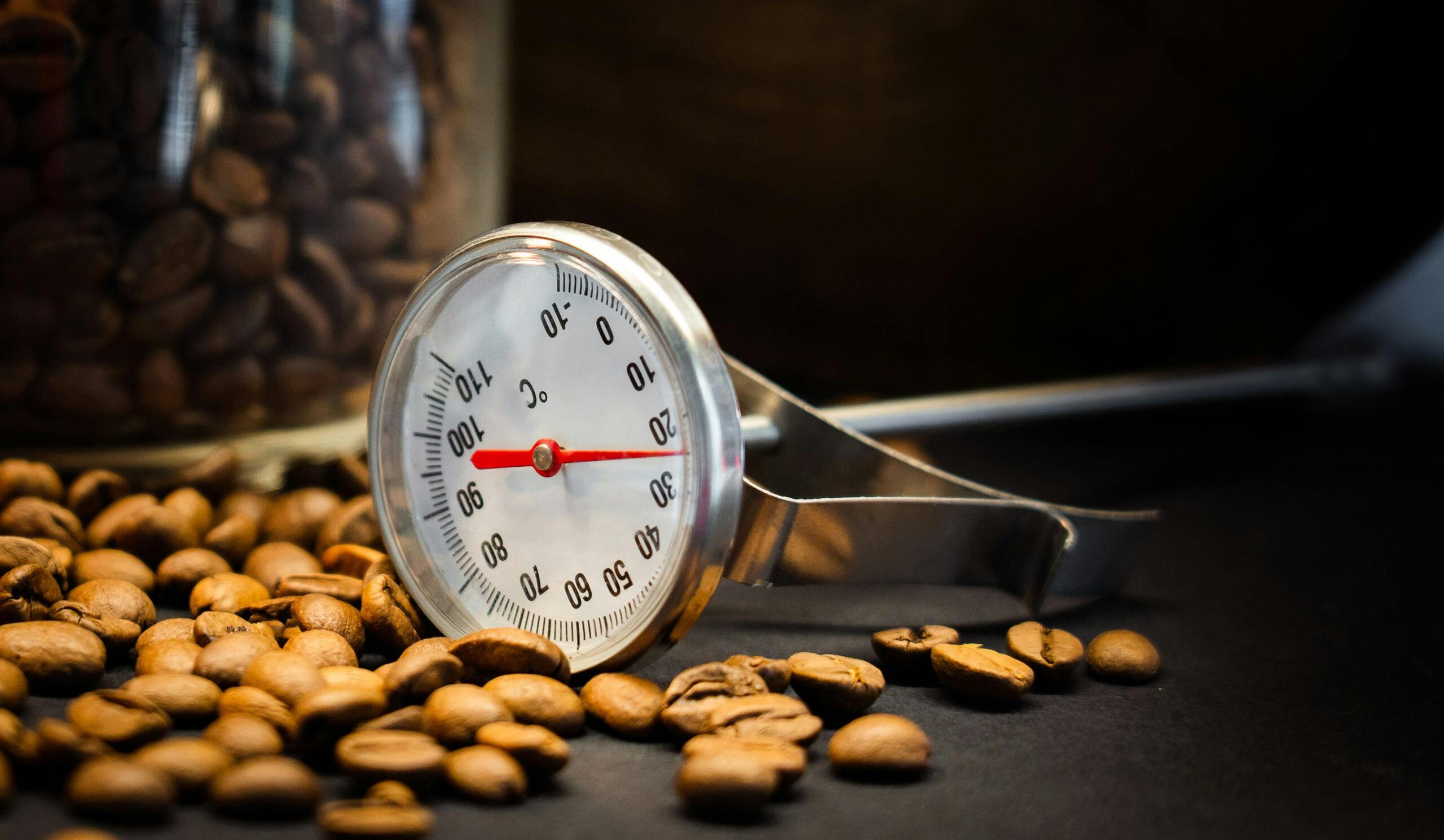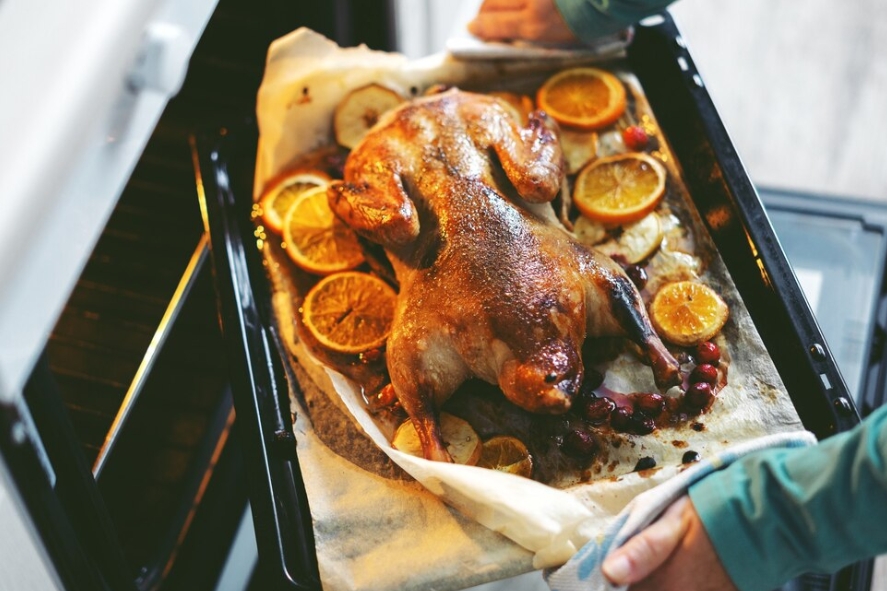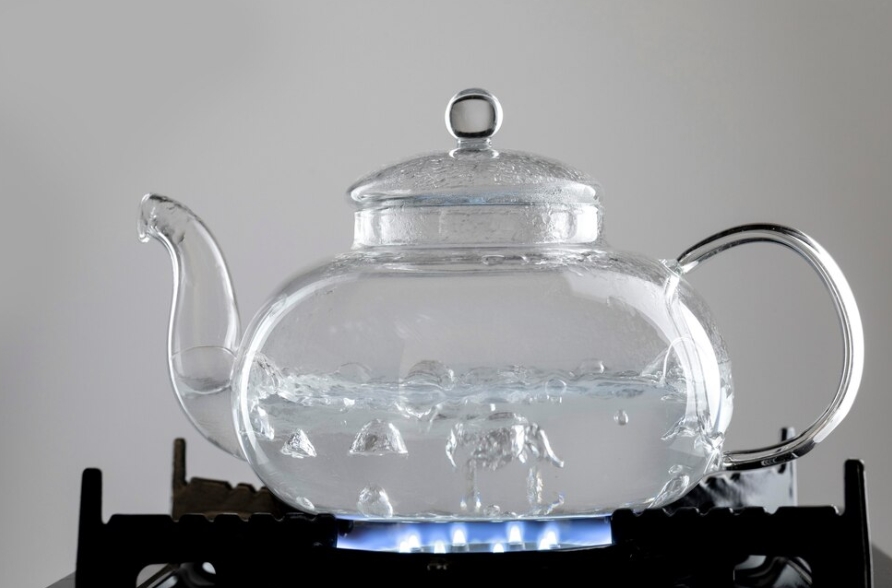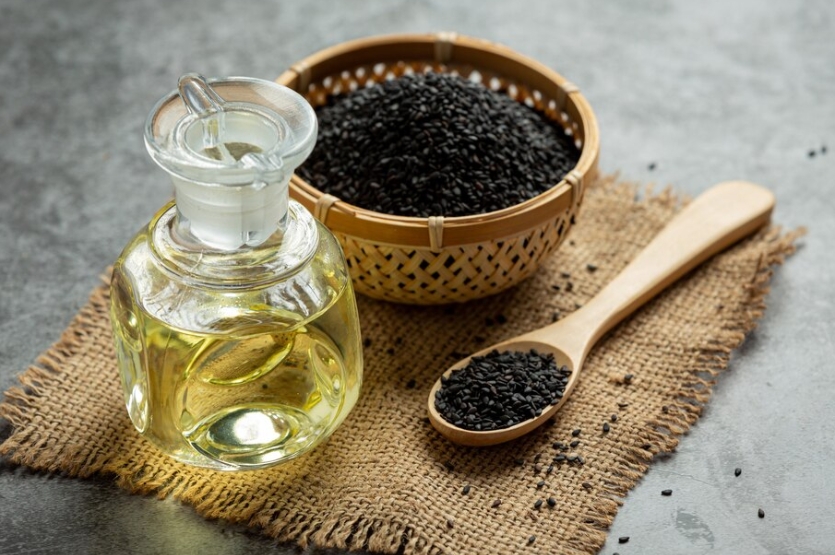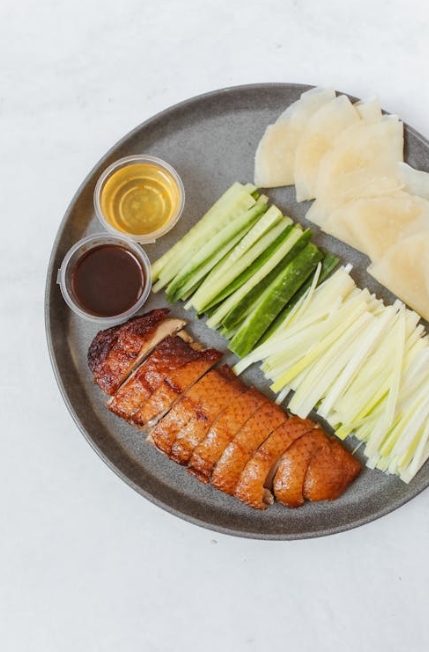Peking Duck is a meal with incredible charm, known for its golden, crispy skin and delicious flesh that melts in your tongue. This culinary masterpiece originated in China and has been developed over ages, becoming one of the world’s most iconic and popular dishes. Peking Duck is a supper that is both a feast for the senses and a culinary treat, combining deep traditions with stunning presentation.
What You Can Learn from This Recipe?
Preparing Peking Duck will teach you the delicate art of attaining the perfect crispy skin through rigorous preparation, air-drying processes, and roasting. You’ll also learn how to balance flavors with complimentary ingredients such as hoisin sauce, fresh scallions, and thin pancakes.
What I Love about This Recipe?
What makes Peking Duck unique is its ability to elevate a simple item into a luxurious experience. I enjoy how each bite contains a symphony of textures, from the crunch of the skin to the tenderness of the meat. It’s more than simply cuisine; it’s a memorable gastronomic journey steeped in history and tradition.
What Is the Best Way to Store Leftovers?
If you have any leftovers (it’s difficult to limit yourself to one dish), refrigerate the duck in an airtight container for up to three days. To reheat, use an oven or air fryer to retain the crispiness without drying out the meat. What To Serve With It
Peking duck tastes well with steaming pancakes, hoisin sauce, and fresh veggies like cucumber and scallions. For a more complex meal, serve with fried rice, sautéed greens, or a steaming bowl of wonton soup.
Peking Duck: A Chinese Gift
Description
Peking Duck is a renowned Chinese dish known for its crispy skin and succulent meat. Traditionally served with thin pancakes, hoisin sauce, and fresh vegetables, this dish has been a symbol of culinary sophistication since the Imperial Era. Perfect for celebrations or a luxurious dinner, Peking Duck is an unforgettable experience of flavors and textures.
For the Duck
For the Pancakes
For the Accompaniments
Instructions
Preparing the Duck
-
Clean the Duck:
- Rinse the duck under cold water and pat it dry. Remove any excess fat and ensure the cavity is clean.
-
Prepare the Skin:
- Mix maltose (or honey) with vinegar and boiling water.
- Pour this mixture over the duck to tighten the skin.
- Let the duck cool.
-
Season the Duck:
- Rub the duck cavity with soy sauce, five-spice powder, and salt.
- Place it on a rack over a baking tray.
-
Dry the Duck:
- Allow the duck to air-dry in a cool, well-ventilated area or in the refrigerator for at least 12 hours or overnight.
Roasting the Duck
-
Preheat Oven:
Preheat the oven to 400°F (200°C).
-
Roast the Duck:
- Place the duck on a roasting rack and roast for 1 hour and 30 minutes, basting with the dripping juices every 20 minutes.
-
Check for Doneness:
- The skin should be golden and crispy, and the internal temperature should reach 165°F (75°C).
-
Rest the Duck:
- Allow the duck to rest for 10 minutes before carving.
Making the Pancakes
-
Prepare Dough:
- Mix flour with boiling water to form a dough.
- Knead until smooth and elastic.
- Let it rest for 30 minutes.
-
Shape Pancakes:
- Divide the dough into small balls.
- Roll each ball into thin circles, lightly brushing with sesame oil.
-
Cook Pancakes:
- Heat a skillet over medium heat.
- Cook each pancake for 1–2 minutes per side until lightly browned.
Serve:
Nutrition Facts
Servings 4
- Amount Per Serving
- Calories 450kcal
- % Daily Value *
- Total Fat 25g39%
- Total Carbohydrate 28g10%
- Dietary Fiber 1g4%
- Protein 30g60%
* Percent Daily Values are based on a 2,000 calorie diet. Your daily value may be higher or lower depending on your calorie needs.
Note
- For the best flavor, use a high-quality duck and ensure it is properly dried for crispy skin.
- Leftover duck can be used in stir-fries or soups.
- Store unused pancakes in an airtight container; they can be reheated in a skillet or microwave.
Journey Of Peking Duck
Embark on this savory trip and let Peking Duck to enchant your taste senses while linking you to millennia of culinary genius.
Peking Duck, a meal synonymous with culinary sophistication, has a rich and savory heritage that matches its golden-brown skin. Its origins date back over a thousand years to China's Imperial courts, when it was created as a delicacy fit for emperors. The dish originated during the Yuan Dynasty (1271-1368), an era of culinary exploration and refinement.
Peking Duck rose to prominence during the Ming Dynasty (1368-1644). Beijing, then known as Peking, became the epicenter of the dish's reputation, with imperial cooks perfecting the preparation and elevating the basic duck to an art form.
Peking Duck's trademark crispy skin and soft, delicious flesh are the result of its unique cooking procedure. The careful process of air-drying the duck, coating it with a sweet maltose mixture, and roasting it over an open flame was a groundbreaking culinary innovation. The resulting dish was acclaimed for its harmonious balance of textures and flavors, which delighted both nobility and commoners.
The imperial kitchens even formalized the recipe to ensure that each duck served was of the greatest quality.
The Cultural Significance
Peking duck is more than a dish; it represents Chinese culture, hospitality, and tradition. It was frequently served at large feasts and festivities, representing prosperity and abundance. The accompanying elements—pancakes, hoisin sauce, and fresh vegetables—improved the experience by stressing the Chinese philosophy of balance in cooking. Sharing Peking Duck over a communal table promotes a sense of community, a deeply ingrained virtue in Chinese culture.
Even the chopping of the duck has ceremonial value. Traditionally, the chef would cut the duck tableside, demonstrating his superb knife abilities.
This technique is more than just a demonstration of culinary expertise; it also acknowledges the precision and artistry inherent in Chinese cuisine.
The Rise in Global Popularity
As trade and migration increased, so did Peking Duck's renown. By the twentieth century, it had become a popular dish worldwide, appearing on menus from New York to London. Chinese immigrants carried their favorite recipes with them, exposing Peking Duck to new audiences and adjusting it to local preferences while maintaining its authenticity.
Modern developments have enabled differences in cooking techniques and flavors. Some chefs utilize convection ovens or even sous-vide techniques to obtain the ideal texture. Others experiment with sauces, using elements such as plum or citrus to appeal to modern palates.
The imperial kitchens even formalized the recipe to ensure that each duck served was of the greatest quality.
The Cultural Significance
Peking duck is more than a dish; it represents Chinese culture, hospitality, and tradition. It was frequently served at large feasts and festivities, representing prosperity and abundance. The accompanying elements—pancakes, hoisin sauce, and fresh vegetables—improved the experience by stressing the Chinese philosophy of balance in cooking. Sharing Peking Duck over a communal table promotes a sense of community, a deeply ingrained virtue in Chinese culture.
Even the chopping of the duck has ceremonial value. Traditionally, the chef would cut the duck tableside, demonstrating his superb knife abilities.
Despite these developments, Peking Duck remains a dish that combines tradition and culinary excellence.
The Main Ingredient: Duck
Of course, the duck is central to Peking Duck. Traditionally, a special breed known as the Pekin Duck was utilized, valued for its soft meat and thick skin. The thorough preparation process, including cleaning, seasoning, and drying, emphasizes the importance of the ingredient. Every stage is intended to accentuate the duck's natural tastes while reaching the desired crispness.
Fun Facts about Peking Duck
- Peking Duck was supposedly a favorite dish of Empress Dowager Cixi, who ate it at lavish banquets.
- Inflating the duck's skin separates it from the fat layer, resulting in an even crisp texture.One of the earliest published recipes for Peking Duck appears in the 1330 cookbook Yinshan Zhengyao (The Proper and Essential Things for the Emperor's Food and Drink).
A dish for all occasions.
Whether it's a grandiose dinner party or an intimate family gathering, Peking Duck can elevate any event. The collaborative nature of constructing pancakes with duck slices, hoisin sauce, and fresh vegetables adds to the meal's interest and flavor.
Today, Peking Duck represents a link between tradition and innovation, a meal that honors its rich history while evolving. Its continuing appeal stems from its ability to bring people together—through history, culture, and the shared experience of a really exceptional gastronomic masterpiece.
Thank you for joining us on this tasty trip into the history and significance of Peking Duck. We hope it inspires you to try this beautiful dish and experience a taste of Chinese culinary culture.
